Einstein said “You know, it would be sufficient to really understand the electron”. At least that’s how Hans Dehmelt quoted him in 1989. As for the original source I’m not sure, I think it goes back to Stanford in 1950, but no matter. The electron was discovered by J J Thomson in 1897, and here we are 128 years later and people still don’t understand it. So much so that people like Frank Wilczek say “to understand the electron is to understand the world”. Even though there’s a wealth of evidence and papers telling you about it:
 Coloured-in image by Martin van der Mark, see Is the electron a photon with toroidal topology? by Williamson & van der Mark
Coloured-in image by Martin van der Mark, see Is the electron a photon with toroidal topology? by Williamson & van der Mark
There’s also YouTube videos, such as Jeroen Vleggar’s Are Electrons made of Light? (The Williamson & Van der Mark Electron model). He published it a couple of weeks ago in his Huygens Optics video blog, and there are 1,724 comments as I speak. Well done Jeroen for giving this great paper the publicity it deserves. What a shame though that John Graham Williamson and Martin van der Mark are no longer with us. They aren’t here to take the model further, or answer questions like what is the confinement mechanism? I knew them, I met them, Martin was my house guest once. He sent me the coloured-in image above. You can see where he commented on my electron article in 2018. Note the word twist. I know they had the answers. What I didn’t know, is that they didn’t have the time.
A worble embracing itself
Anyway, you can understand the electron, and when you do understand it, you will be surprised at how simple it is. You will also be surprised at just how many clues have gone unnoticed. There’s a cornucopia of low-hanging fruit in the historical papers. ThIngs like Oersted’s Theory dating from 1820: “Oersted proposed that a vortex-like, circular distortion existed around the wire”. Then came Ampère: “rare were those physicists who accepted Oersted’s vortex explanation, but Ampère was one of them”. Then we had Helmholtz and his Wirbelbewegung. Then we had Maxwell and his Theory of Molecular Vortices. Then Thomson and Tait’s Vortex atoms, and their Treatise on Natural Philosophy where they coined the phrase spherical harmonics. We also had Tait’s knot table. I particularly liked Maxwell’s 1867 letter to Tait where he said the simplest indivisible whorl “is either two embracing worbles or a worble embracing itself”. The TQFT buffs amongst you might recognise that as the trivial knot. The sailors and cowboys among you might recognise that it’s akin to a clove hitch:
 GNUFDL trivial knot image by Makatoy, clove hitch image by USCG PTC Developer
GNUFDL trivial knot image by Makatoy, clove hitch image by USCG PTC Developer
It isn’t a very complicated knot, but it can be so quick to tie the cowboy can almost throw it, and it will keep his horse tied up while he’s in the saloon. The cow hitch is similar and is arguably more of a trivial knot.
First of all though, you have to understand the photon
First of all though, you have to understand the photon. It isn’t some point-particle, it’s a wave. See Pascual Jordan’s resolution of the conundrum of the wave-particle duality of light by Anthony Duncan and Michel Janssen. Pascual Jordan solved the issue of wave/particle duality way back in 1926, the year the photon got its name. Furthermore the photon is not a wave packet, or a wave train. Again it’s a wave, and it’s a transverse wave, not a plane wave. That’s why E=hc/λ applies regardless of frequency, because the dimensionality of action h can be expressed as momentum times distance:
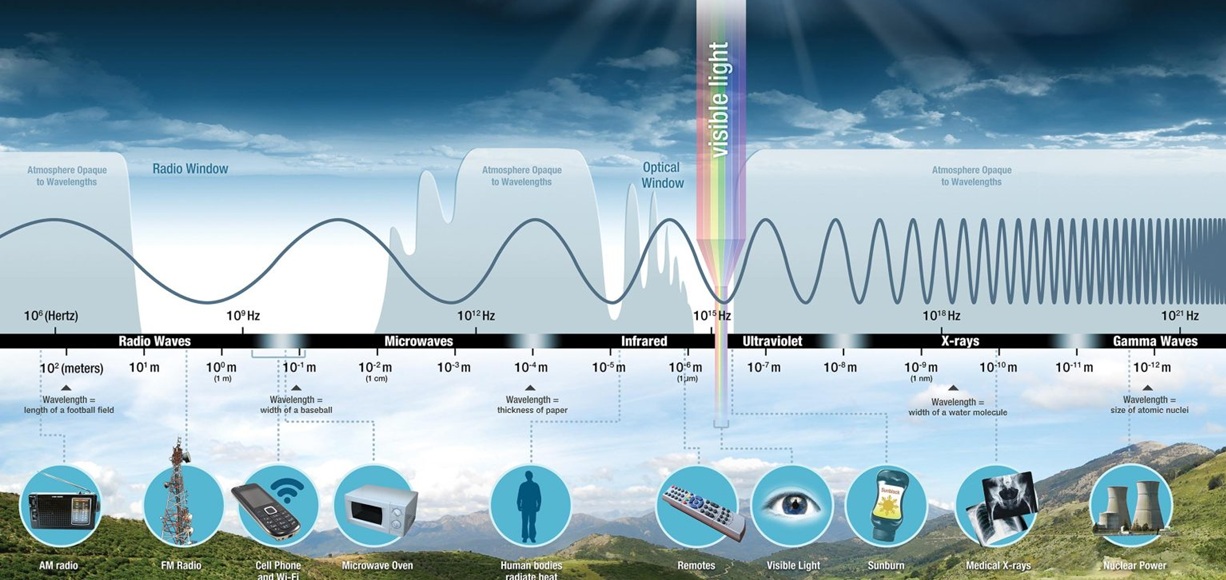 NASA image from the SciTech Daily article Science Made Simple: What Are Photons?
NASA image from the SciTech Daily article Science Made Simple: What Are Photons?
A photon is also a soliton in that it does not disperse, it just keeps on going. It’s a singleton soliton electromagnetic wave. Don’t think it’s an electric wave and an orthogonal magnetic wave which cause one another to be generated in some kind of do-si-do leapfrog fashion. That’s lies-to-children which totally ignores Maxwell’s unification.
An electromagnetic field is a dual entity
Instead see the Wikipedia article on Jefimenko’s equations where you can read this: “neither Maxwell’s equations nor their solutions indicate an existence of causal links between electric and magnetic fields. Therefore, we must conclude that an electromagnetic field is a dual entity always having an electric and a magnetic component”. Also see the Wikipedia electromagnetic radiation article where you can read this: “the curl operator on one side of these equations results in first-order spatial derivatives of the wave solution, while the time-derivative on the other side of the equations, which gives the other field, is first order in time”. The electric wave E is the spatial derivative of the real electromagnetic wave, whilst the magnetic wave B is the time derivative. This is why Hermann Minkowski referred to the time axis in Space and Time. That’s where he talked about the electromagnetic field, the linear electric force and the rotational magnetic force, and how they can be likened to a screw. It’s also why we have Faraday’s law ∇ × E = − ∂B/∂t. It doesn’t mean that changing one field induces the other. The equals sign is an “is”. The curl of E is the time rate of change of B because they’re two aspects of the same thing, the electromagnetic wave.
A canoe analogy
To get a handle on it, we can use a canoe analogy. Imagine you’re in a bright orange canoe at sea, and there’s a 10m tsunami coming your way. As it approaches, your canoe tilts upward. The degree of tilt denotes E, whilst the rate of change of tilt denotes B. The degree of tilt increases along with the rate of change of tilt. When you’re halfway up the wave, both are at a maximum. Then the tilt starts to decrease, until you’re momentarily at the top of the wave. At this point your canoe is horizontal and has momentarily stopped tilting. Hence it’s a place where E and B are zero, even though the potential is at a maximum. Then as you go down the other side, the situation is reversed. We can plot it like this:
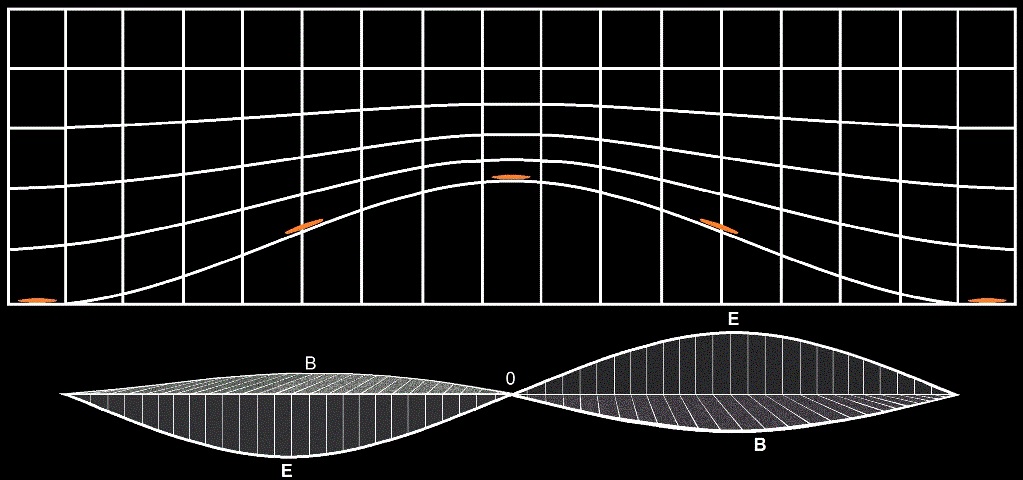 Photon image drawn by me
Photon image drawn by me
The upper portion of the image depicts the Fμν electromagnetic wave in space. That’s important. See section 11.10 of John Jackson’s Classical Electrodynamics where he says “one should properly speak of the electromagnetic field Fµv rather than E or B separately”. This is why the upper portion of the image depicts the photon. It’s sinusoidal. The lower portion of the image depicts E and B. They’re sinusoidal too, since the derivative of a sine is a cosine, which is a shifted sine. But the photon is not comprised of two orthogonal waves. It’s one wave, not two.
Photon spin
I should add that what isn’t depicted above is the photon spin. A photon has a circular polarization, but it’s difficult to draw. It’s quite easy to visualize a flat-bottomed sinusoidal strip with a twist, like this image:
 Photon image drawn by me
Photon image drawn by me
However it’s not easy to draw a spin-1 twisted transverse wave corkscrewing through three-dimensional space. It is however important to remember that it really is a wave in space. In his 1861 paper On Physical Lines of Force Maxwell said light consists of “transverse undulations of the same medium which is the cause of electric and magnetic phenomena”. Don’t overthink this, and don’t dismiss it, because Einstein reintroduced the aether in his 1920 Leyden Address. He thought of space as some kind of gin clear ghostly elastic solid, and he wasn’t the only one. The point to appreciate is this: when an ocean wave propagates through the sea, the sea waves. When a seismic wave propagates through the ground, the ground waves. So what waves when an electromagnetic wave propagates through space? The answer is space.
They used a ribbon-like strip representing E and B rather rather than a sinusoidal strip representing Fμν
All this should tell you something about the Williamson / van der Mark electron. The first thing is that they used the wrong paper strip. They used a ribbon-like strip representing E and B rather rather than a sinusoidal strip representing Fμν. Here’s their strip:
 Coloured-in image by Martin van der Mark, see Is the electron a photon with toroidal topology? by Williamson & van der Mark
Coloured-in image by Martin van der Mark, see Is the electron a photon with toroidal topology? by Williamson & van der Mark
Had they used the sinusoidal strip and wrapped it round twice with a twist, they would have a Eureka moment. That’s because they would have had something that resembled Dirac’s belt, wherein “a Möbius strip is reminiscent of spin ½ particles in quantum mechanics”. It would have resembled the spinor, which is “essential to describe the intrinsic angular momentum, or “spin”, of the electron”. Like this:
 Sinusoidal strip by me, GNUFDL spinor image by Slawekb, see Wikipedia
Sinusoidal strip by me, GNUFDL spinor image by Slawekb, see Wikipedia
It’s important that you try this for yourself. For some reason people just don’t get it until they get some hands-on experience. Find a sheet of Christmas wrapping paper with different colours on each side, and cut a long thin flat-bottomed sinusoidal strip to emultate the photon. Now give it a 180° twist to emulate the circular polarization. Then bring the ends towards one another, and slide them along each other to make a Möbius strip. Then apply Sellotape to hold it in place at two or three places. Note how the strip is wrapped round twice, hence there’s 720° of rotation. Also note that the wider portions of the sinusoidal strip line up with the thinner portions to yield the same width all round. You can’t see the phase any more. In similar vein the photon, a field variation, is transformed into the electron, a wave in a closed path that looks like a standing field. You will hear me say things like standing wave, standing field, but Williamson and van der Mark said “we do not have a standing wave, but a stationary wave propagating around a double loop”. Repeat the process but this time give it a a 180° twist the other way to make another Möbius strip with the opposite chirality. This represents a positron. It too is a wave in a closed path. In the 1920s and 1930s the quantum realists wrote papers about this sort of thing. See for example Charles Galton Darwin’s 1927 Nature paper on the electron as a vector wave, which talked about a spherical harmonic for the two directions of spin. Or Born and Infeld’s 1935 paper On the quantization of the new field theory II where they talked about rotation and internal motion and referred to the Poynting vector and displacement current.
Divergent and convergent electric field lines just don’t work
As I’ve said to my Zitter buddies, there’s no point drawing electric field lines on your paper strip. That’s because divergent and convergent electric field lines just don’t work. Two electrons repel, two positrons repel, but an electron and a positron attract.
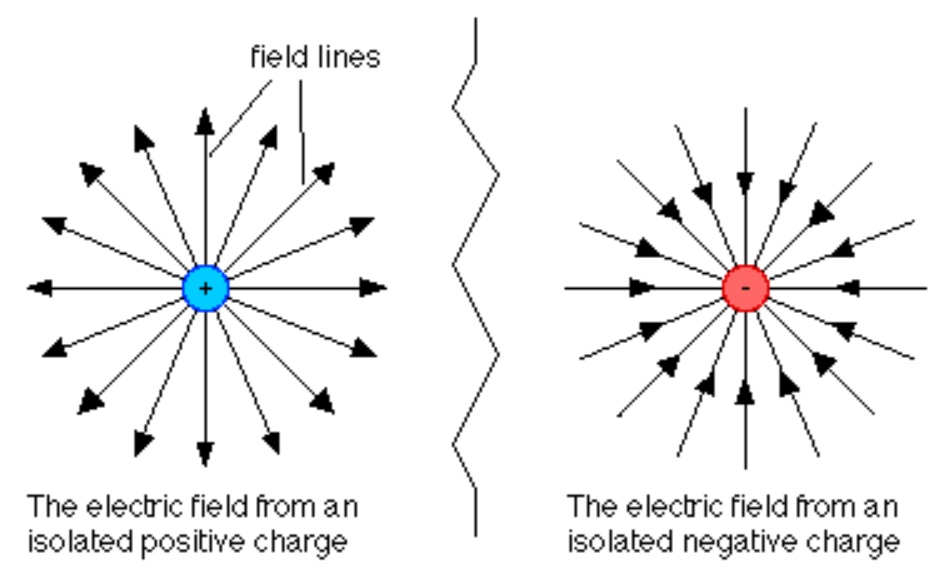 Image by Andrew Duffy from his PY106 course
Image by Andrew Duffy from his PY106 course
It’s an illustration of the way Maxwell’s unification doesn’t feature as much as it should in modern teaching. Positive charges are not sources, negative charges are not sinks. Maxwell talked about vortices and the screw nature of electromagnetism, not some mystical fluid mysteriously appearing and disappearing. Besides, neither the electron nor the positron is surrounded by a field of force. Instead electromagnetic field interactions result in linear electric force and/or rotational magnetic force. It takes two to tango. I’ll come back to that.
You have to inflate your Dirac’s belt Möbius strip spinor into a torus
The paper strip is only the starting point for understanding the electron. The photon is a wave in three dimensional space, not a flat sinusoidal strip. To move on to a more realistic electron you have to “inflate” your Dirac’s belt Möbius strip spinor into a torus, like you’re pumping up a bicycle inner tube. Then it resembles Williamson and van der Mark’s figure 2. Here it is again:
 Coloured-in image by Martin van der Mark, see Is the electron a photon with toroidal topology? byWilliamson & van der Mark
Coloured-in image by Martin van der Mark, see Is the electron a photon with toroidal topology? byWilliamson & van der Mark
However the electron doesn’t have a surface, just as a wave in space doesn’t have a surface. Williamson and van der Mark spoke of “a family of nested toroidal surfaces” but they’re only an abstraction, and there’s no end to them. Morever, experimental evidence indicates that the electron has a spherical symmetry and has no discernible electric dipole moment. So to take it further you have to keep on inflating the torus.
It’s circa 2 by the way because the photon is wrapped round twice, and light is a form of displacement current
How far do you go? I think we go all the way, but the g factor of 2.0023192 suggests some slight imperfection. It’s circa 2 by the way because the photon is wrapped round twice, and light is a form of displacement current, which “is a source of the magnetic field” just like conduction current. Take a look at the 2010 physicsworld article taming light at the nanoscale. The subtitle says “In electronics we control the motion of charged particles, but is this the only current available to us?” The answer is no. But I digress. Here’s where I think we go. Watch the animation until it stops momentarily, when the toroidal radius is the same as the poloidal radius, and the torus looks spherical:
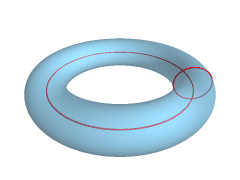 Public domain animation by Lucas Vieira, see the Wikipedia Torus article
Public domain animation by Lucas Vieira, see the Wikipedia Torus article
The caption says this: “As the distance from the axis of revolution decreases, the ring torus becomes a horn torus, then a spindle torus, and finally degenerates into a double-covered sphere”. Is the electron a torus, or a degenerate torus which we call a double-covered sphere? I don’t know.
Otherwise it wouldn’t be a worble embracing itself
However I do think it’s more of a spindle torus or a double-covered sphere rather than ring torus or horn torus. Otherwise it wouldn’t be a worble embracing itself. I think it’s like drawing (f) in Valeriy Sbitnev’s diagram below:
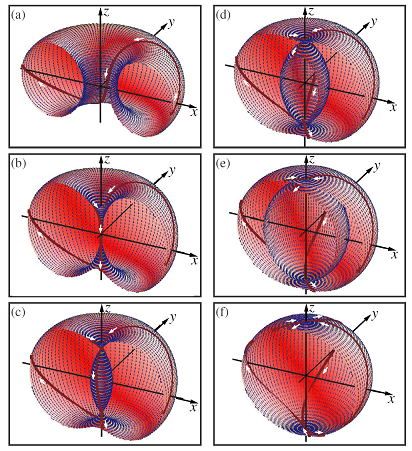 Ring torus transformations from Hydrodynamics of Superfluid Quantum Space: de Broglie interpretation of the quantum mechanics by Valeriy Sbitnev
Ring torus transformations from Hydrodynamics of Superfluid Quantum Space: de Broglie interpretation of the quantum mechanics by Valeriy Sbitnev
I also think that because only then does the electron look like the s-orbital. In the hydrogen atom the electron isn’t going round the proton like a planet orbits a star, it’s more like a spherical version of Saturn’s rings. It’s a wave going round and round at the speed of light, only as per the spinor strip, you can’t see the phase changing because the minima and maxima add up to the same width all round. Here’s some animations of a ring torus, a horn torus, and a spindle-sphere torus courtesy of Adrian Rossiter. Thank you Adrian. They are followed by an Encyclopaedia Britannica illustration of an s-orbital which by some quirk of fate, is more or less the same colour:
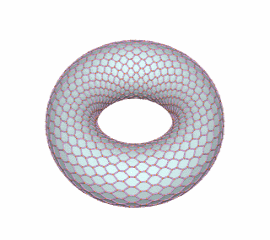
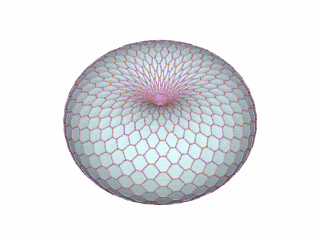

 Gifs courtesy of Adrian Rossiter’s torus animations, S-orbital image from the 2010 Encyclopaedia Britannica
Gifs courtesy of Adrian Rossiter’s torus animations, S-orbital image from the 2010 Encyclopaedia Britannica
Note however this is not the complete electron. This is only the inner portion, the eye of the storm as it were. And the eye of the storm is not the hurricane. In similar vein the electron is not some toroidal or spherical thing with a radius of the Compton wavelength divided by 4π. Ithe electron has no surface. It’s quantum field theory. The electron is not some billiard-ball particle that has a field. The electron’s field is what it is.
The outer parts move at the speed of light, so they have to lag the inner parts
To appreciate this we have to go back to the Fμν electromagnetic wave in space. Here’s another picture of it, this time stretched out lengthways. It’s a flat 2D picture lacking the circular polarization, but it will have to do:
 Photon image by me
Photon image by me
So, what happens when you wrap this up like you wrapped up the sinusoidal paper strip? It’s difficult to draw. It would be something like this image I found on Stack Exchange. Doing that with grid lines is beyond my current capabilities. However I can use an online tool to bend it into a circle like this:
 Fμν electromagnetic wave in space image bent into a circle using https://fontmeme.com/bend-images/
Fμν electromagnetic wave in space image bent into a circle using https://fontmeme.com/bend-images/
The image is not ideal. Apologies. For example the grid lines should extend outwards to fill the whole space. But the image is good enough to show you something important: electron spin is not like the rotation of a playpark roundabout. The inner parts are going round at the speed of light, and this image would have you thinking the outer parts are going round faster than the speed of light. That can’t happen, because light does not move faster than light. The outer parts move at the speed of light, so they have to lag the inner parts. Like this image, again created via an online tool:
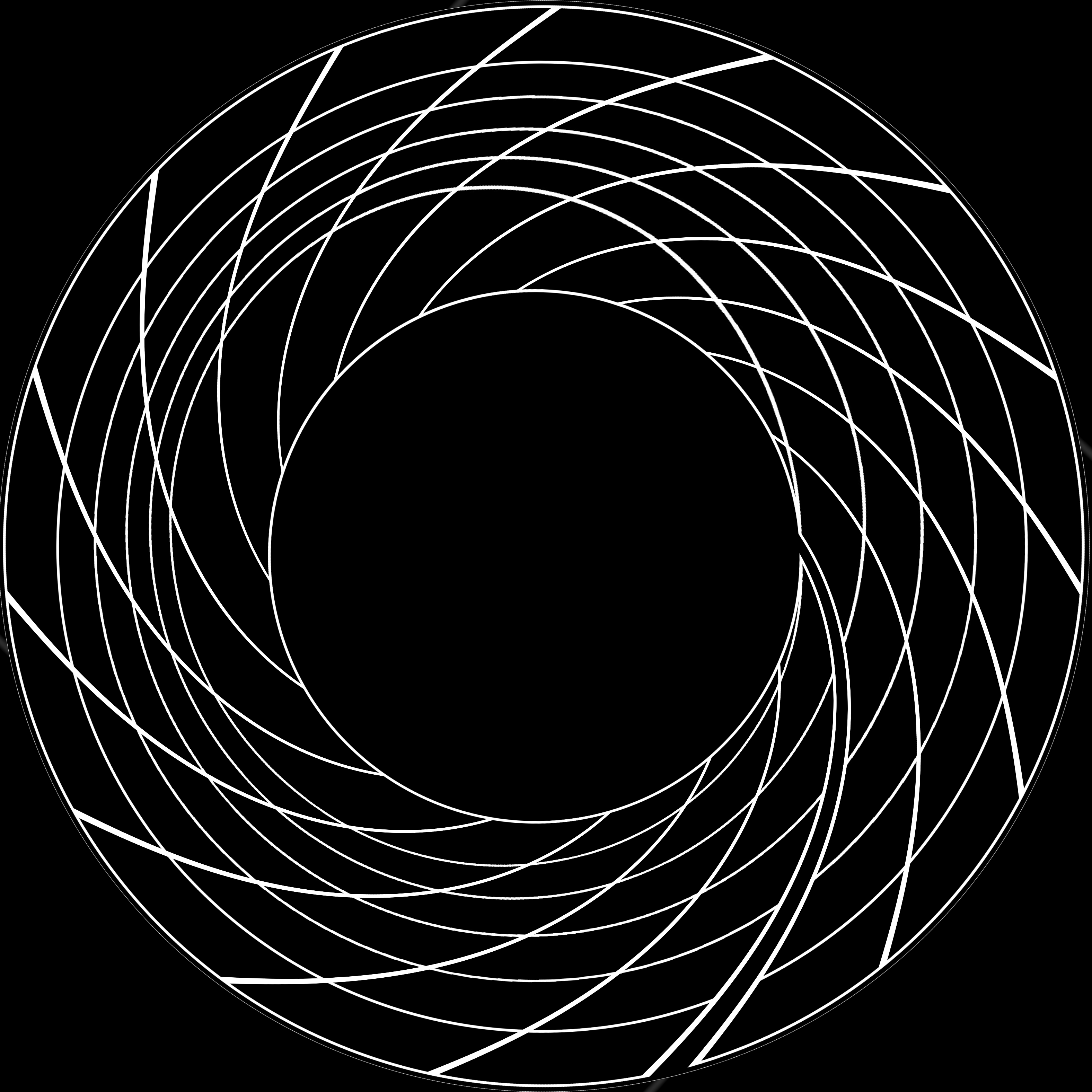 Circular photon image twisted using https://safeimagekit.com/filter/twist-filter
Circular photon image twisted using https://safeimagekit.com/filter/twist-filter
It looks like a vortex doesn’t it? For good reason. Because Thomson and Tait were barking up the right tree. Because that’s what you end up with when you wrap up your photon to make an electron.
The photon is wherever the curvature is
It would be something like the image below. But apologies again, this is a flat 2D picture, it ought to be 3D and chiral. The point to note about it is that the photon isn’t just the lower part of the first image, and the electron isn’t just the central portion of the second image. We are dealing with waves in space here. The photon is a wave in space. It isn’t just a localised hump or pulse. Waves in space are extended entities. The photon is wherever the curvature is, and there’s no end to it. Whether it’s moving on a linear path, or on a curved closed path. Whereupon we don’t call it a photon any more. We call it an electron:
 Photon and electron images by me
Photon and electron images by me
You will have seen something similar in gravitomagnetism, where it’s described as frame-dragging. Gravitomagnetism was developed by Oliver Heaviside as an electromagnetic analogy. It was tested by Gravity Probe B. Check out Gravity probe B online and you will read that “space is twisted”:
 Gravity-probe B image by James Overduin, Pancho Eekels and Bob Kahn
Gravity-probe B image by James Overduin, Pancho Eekels and Bob Kahn
Gravity probe B is a gyroscopic precession experiment. And guess what? The electron goes round in circles in a magnetic field because of Larmor precession. There is no magical mysterious action-at-a-distance. The spinor drives itself because space is twisted. It’s similar to the gyroscopic precession of a boomerang. The positron is like a left-handed boomerang, it goes round the other way. All good stuff isn’t it? Now ask yourself this: why have you never seen any depictions ,of the electromagnetic field?
When there is both convergence and curl, it will point in a spiral manner
There are plenty of depictions of the gravitomagnetic field, the electric field, and the magnetic field, but not the electromagnetic field. It’s another sign that it’s as if Maxwell’s unification never happened. I feel unhappy about that, because in 1871 Maxwell wrote a paper called Remarks on the Mathematical Classification of Physical Quantities. He talked about vectors along with electric translation and magnetic rotation. He referred to Thomson and Tait as well as Descartes and Ampère. He also referred to Helmholtz and “his great paper on vortex motion”. Then he drew electric convergence and magnetic curl, and then combined them. Like this:
 Image by James Clerk Maxwell
Image by James Clerk Maxwell
He talked about vector which points toward the origin P “when there is pure convergence”. He also said this: “When there is pure curl, it will point tangentially round P; and when there is both convergence and curl, it will point in a spiral manner”. His drawing doesn’t show this spiral manner very well. So let me make it clearer for you:
 Convergence and curl image by me
Convergence and curl image by me
When you combine the electric field lines with the magnetic field lines, then you see a depiction of the electromagnetic field. Then you can hopefully appreciate that the electron isn’t just an example of tying light in knots, it’s also an optical vortex.
Charged particles move the way that they do because each is a dynamical spinor in frame-dragged space
After that, I hope you can appreciate why charged particles move the way that they do. Not because messenger particles are flashing and forth. Hydrogen atoms don’t twinkle, magnets don’t shine. Au contraire, charged particles move the way that they do because each is a dynamical spinor in frame-dragged space, and because co-rotating vortices repel, whilst counter-rotating vortices attract:
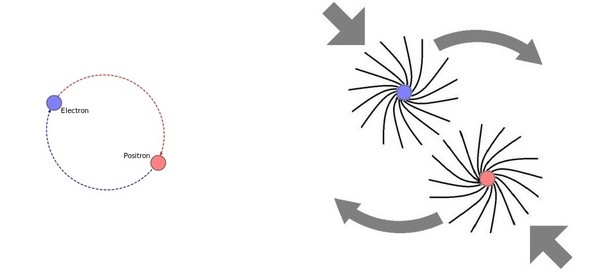 CCASA positronium image by Manticorp/Rubber duck, see Wikipedia, spinor image drawn by me
CCASA positronium image by Manticorp/Rubber duck, see Wikipedia, spinor image drawn by me
This is why it takes two to tango. You need two or more charged particles to see rotational motion and linear motion. When we contrive our charged particles such that the rotational forces cancel, we only see the linear forces, and we talk of an electric field. When we contrive our charged particles such that the linear forces cancel, we only see the rotational forces, and we talk of a magnetic field. But the field that’s really present is the electromagnetic field. That’s why relative motion upsets the balance and makes you think an electric field is turning into a magnetic field, or vice versa. In 1929 Einstein described a field as a state of space. What’s the state of space for an electromagnetic field? Twisted. Curved if you prefer. Either way, if you were moving through it, or vice versa, and didn’t know this, you might think of it as turning space, especially if you know that another word for curl is rot, which is short for rotor. You would think of it as a magnetic field. Maxwell didn’t speak of the screw nature of electromagnetism for nothing. Nor did Minkowski. Electromagnetism is all about twist and turn.
The confinement mechanism is curved space
So what’s the confinement mechanism for the Williamson / van der Mark electron? Here’s a clue: Williamson and van der Mark used the phrase “curved space” five times in their electron paper. The confinement mechanism is curved space. A photon is a wave in space. Where space waves, space is curved. When a photon moves through curved space, its path is curved. Make it move through itself and get it right, and that curved path is so curved it’s a closed path. Amazingly Schrödinger talked of a wave in a closed path in 1927, but it seems to be forgotten now. A wave of spatial curvature going round and round with a compound spin ½ rotation gives you a chiral region of twisted or curved space that we call the electron. It’s like what Percy Hammond said in The role of the potentials in electromagnetism: “the field describes the curvature that characterizes the electromagnetic interaction”. But it isn’t some curvature of a fibre bundle. There are no fibre bundles, not in the real world. Because it’s like what Einstein said in Nottingham in 1930: “it appears that space will have to be regarded as a primary thing and that matter is derived from it”. When people say the atom is 99% empty space, they’re wrong. By 1%. Space is the only thing there really is. So what’s curved is space. John Williamson talked of a pivot force. Others speak of the strong force. But the bottom line is this:the only tool in the box is a wave in space, and there are no waves where something doesn’t wave. This is why charge isn’t fundamental. It’s topological. Like Williamson and van der Mark said on page 8 of their electron paper. What a great paper it is. It’s what got me started on all this.
Spin is a real rotation
I should add that curved space is not the same as curved spacetime. See the Baez preliminaries article which says the distinction is crucial. Einstein described a gravitational fueld as a place where space is neither homogeneous nor isotropic, the inhomogeneity being non-linear. See How gravity works for more. It’s essentially a refraction, like Newton said, and like Einstein said. Einstein even referred to Huygens. Jeroen Vleggar was right in his YouTube video Gravitational Index of Refraction. Just as Hans Ohanian was right in his 1984 paper What is spin? Spin is a real rotation. The Einstein-de Haas effect proves it. Pauli flat out lied when he shot down Ralph Kronig’s electron spin in 1925 saying the electron would have to be spinning faster than light. He did it to undermine the realists like Einstein and Schrödinger, and to promote the Copenhagen mysticism that said you can never hope to understand it. The mysticism that employed the point-particle electron that led to the problem of infinities, the kludge called renormalization, and the peculiar notion of exchange forces. It was all downhill from there. Now the Standard Model of particle physics is wrong on multiple counts. It contradicts E=mc². It doesn’t tell you what charge is. It doesn’t even tell you how a magnet works. Or that electron capture does what it says on the tin and the nuclear force is electromagnetic. Or that the proton is the next knot in the knot table. Instead, here we are a hundred years later and people still don’t understand the electron is. Well, maybe you do know now. At least in part. I hope this has helped. Have a nice day.
PS: See Martin van der Mark’s Light is Heavy where you can read that mass is a measure of resistance to change-in-motion for wave in a closed path. I believe his co-author is not the Nobel ‘t Hooft. Also see his paper On the nature of stuff and the hierarchy of the forces where you can read that the wave nature of matter means you can’t fit 2.3 MeV quark inside a 938 MeV photon. In addition see Quicycle.com, a physics think tank founded by John Williamson and Martin van der Mark.
I just finished reading “the idea factory” about Bell Labs. It seems several of the early workers were oil drop counters at Chicago.
It sure would be good to wrest Bell Labs from Nokia’s control and get them doing research into electromagnetic gravity and associated spin-off inventions.
That’s kind’a my plan… so far the markets have been cooperating, but right now star gazing in chile takes precedence over world domination! I think google is attempting to carry the torch…not holding my breath!
A little known tidbit. AT&T built the microwave horn that picked up the Big Bang signal for the purpose of tracking the Echo Mylar balloon in orbit. It was on wheels and a pivot. Picture of bunch of engineers in white short sleeve shirts walking it around in circles, scratching their heads as to why the signal was the same in all directions. I would have wrongly assumed because the origin of the noise was in the amplifier or cabling.
LOL, I would have wrongly assumed it was the pigeon droppings!
I bet those engineers would be happy that their old building was repurposed as a bar:
https://maps.app.goo.gl/YbGV842B3BHcPVqo6?g_st=ipc
Sir Detective, it would be amazing for us to get free access to world’s best supercomputers to pump them with this model of particle physics (photons as waves of aether, electrons as standing configuration of photon, etc) – and see simulation of macro world effects like gravity, mass. Anyway as I know current simulations are going well (Maxwell Equitions and others), they find new materials and applications.
Tony: it certainly would. It would be great to see some simulations of all this. I write an article on that at the start of 2025, see Guidance notes for simulations. It’s a question of getting publicity and/or getting people interested. Since I’m an IT guy, I could do something, but I don’t have particular expertise on animations and it would consume all my time.
The van der Mark article does not allow cut and paste but it mentions big energy pulses curving space like gravity does. Per ref [20]
Steve: I’m sorry, I don’t know what you mean. Please can you elaborate?
I got chills when you grow the electron donut into a double-walled donut, which matches the s-orbital.
Why thank you Jeremy. I have other chills awaiting you. So many, that you are going to end up feeling like a frozen popsicle!
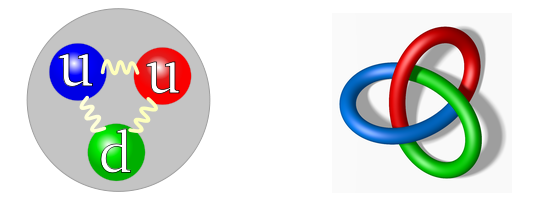
See the trefoil on the right? Trace around it anticlockwise from the bottom left calling out the crossing-over directions: up down up. How cool is that? particularly seeing as the the proton g factor is 5.585, nearly three times that of the electron.
Best article yet John ! Please consider doing your own 3-D videos to complete the 2-D diagrams of this essay and upgrade to a YouTube video presentation ?
Also, I can’t read anybody else’s comments directly.
And now back to a real life, potential biological KLUSTERFUCK :
https://nypost.com/2025/12/01/us-news/chinese-scientist-who-smuggled-dangerous-vomitoxin-fungus-into-us-has-been-deported/
Many thanks Greg. All points noted. I will see if I can get somebody else interested in videos. It’s a lot of work for me, and whilst I’m an IT guy I’ve never done animations.
For some strange reason your comment has just appeared, but it’s dated 2nd December and was top of the list on the right of the home screen. It’s a concern to me if you can’t see anybody else’s comments. Are you on a laptop? Please tell me more.
Jeez, I’m reading the story: “A Chinese researcher who smuggled a crop-killing fungus dubbed “vomitoxin” into the US has been deported”. A crop killing fungus? That sounds like hybrid war. Is that what Covid was? What next I ask?
PD Replying from memory, but if I recall correctly the article mentioned a link between gravity and electromagnetics which at first blush is really cool!
Steve: yes, it’s cool all right. I mentioned it in The principle of equivalence and other myths and in Mysteries of physics part4. The fine structure constant α = e²/4πε₀ħc is a running constant, and is thought to vary with gravitational potential. I suspect it does vary, because c varies and c = 1/√(ε₀μ₀). I’m pretty sure gravity is a residual force. When the linear electric forces balance but the rotational magnetic forces don’t, we say a magnetic field is present. When the rotational magnetic forces balance but the linear electric forces don’t, we say an electric field is present. When the linear electric forces balance and the rotational magnetic forces balance, there’s still something left, only it’s very very weak. That’s when we say a gravitational field is present.
If one wanted to pen a formula for variable speed of light vs grav potential that doesn’t change the fine structure constant you could “via suitable choice of units set mu = epsilon” which would result in c = 1/ epsilon which in turn would cancel each other out in the formula for alpha.
Scan the van der mark paper for gravitation, the 4th and 5th instances.
I use almost exclusively, my Samsung Galaxy Semi-Smart phone. I also had to enter and save my personal info again. All problems with with opening up comments are now gone.
Yes, YouTube is definitely a serious upgrade in work load, but I do have confidence all your loyal personal friends, professional colleagues, and us reader/fans would freely contribute to ” The Cause ! “. Ideas 💡 are my only small way of contributing to The Physics Detective’s 1st. YouTube spiel.
I’ve got a Samsung Galaxy A35. I let it do an upgrade last week, and now things are annoyingly different. When I’m king of the world, things like that will be a punishable offence. Along with spam, popups, and one or two other things I could care to mention. But anyway, I’m glad you comments issue is now gone. Noted re the YouTube stuff. I hope this sort of thing catches on and people do come up with animations etc. We will see!
Sir Detective, recent news concerning photons – a new study revealed that the magnetic component of light exerts a surprising influence on matter, affecting 17 percent of atomic spin in the visible spectrum and up to 75 percent in the infrared.
This re-examination of the magnetic effect of light on matter could open up new possibilities for scientists to manipulate atomic spins, creating new forms of storage and sensor technologies. (https://www.popularmechanics.com/science/a69596658/light-magnetic-secret-faraday-effect/)
Many thanks Tony. That’s an interesting article. It’s quite obvious really, but nobody thought of it, including me. If the Faraday effect rotates light, conservation of angular momentum means some other rotation must be occurring. Like the atomic spin. Having said that, the article talks about two centuries of scientific assumptions along with electromagnetic induction and the Faraday effect, and refers to James Clerk Maxwell’s famous equations. But then it goes and says this: “Our results show that light ‘talks’ to matter not only through its electric field, but also through its magnetic field, a component that has been largely overlooked until now”. Aaagh! It’s the electromagnetic field not the electric field and the magnetic field! I tell you Tony, I sometimes feel like it’s as if Maxwell’s unification never happened!
The s-orbital correlation is lovely, it begs the question of how the higher-order orbitals would be organized in this scheme. Is there some math that allows a strange overlapping donut that wraps 4 times, at a greater radius, that still allows an electron to retain its structure if it gets knocked off?
Jeremy: it’s spherical harmonics I suppose. Amazingly, Thomson and Tait came up with it. IMHO after Compton scattering when the electron has absorbed part of a photon, the electron is no longer spherically symmetrical, and the light path doesn’t end up where it started. As a result, the electron moves. This is true in an orbital too, but there’s a “gears” effect in play, such that only some energy increases are stable. Then the electron moves like a tetherball. But it isn’t much like the tetherball, it’s more like a spherical hula hoop. It’s quite hard to imagine what this looks like if it’s moving around a proton. What would a hurricane look like if it was moving in a fast figure-of-8 path? Tricky!

What dos van der mark mean by:
pair creation can only occur above a certain threshold
Steve: you need to have more than 2 x 511keV of photon energy. If you do gamma-gamma pair production with two photons of exactly 511keV, there’s no extra energy to separate the electron and the positron.
Do you think matter waves and em waves are both space waving or are they somehow fundamentally different?
Thanks in advance and apologies if this has been previously covered.
Steve: I think matter waves are electromagnetic waves, and both are space waving. However when an electromagnetic wave is wrapped up as matter, the waving this way ↑ lines up with the waving this way ↓ so you can’t see any waving going on. You don’t see a field variation going up ↑ then down ↓, you see what looks like a standing field instead. But it isn’t really motionless. Williamson and van der Mark called it a stationary wave to make a distinction.
John, I just read several articles/videos on Spintronics. What are your Expert I.T. Guy thoughts ? I’m incredibly pumped, because my interpretation is that both are exclusively based on Classicle/ Maxwellian concepts.
Greg: I think spintronics is legit. But I also think it’s effectively magnetism on a small scale. Not that I know much about it. Maybe I should find out more and read stuff like this.
“I visualize a time when we will be to robots what dogs are to humans. And I am rooting for the machines.”
― Claude Shannon
Here’s Dr. Sabine’s spiel on Spintronics :
https://youtu.be/O1_37hEtx5o?si=BWEZpjI7tsthxRKl
https://quicycle.com/
Darn, I forget to mention Quicycle. I will add it somewhere. I did however refer to the video at https://www.youtube.com/watch?v=hYyrgDEJLOA.
https://www.youtube.com/watch?v=hYyrgDEJLOA
Thick accent but I found it helpfull.
I actually studied EE a split second ago, and some of it stuck, this vid would have helped.
From experimentalist point of view we are always in the middle of the way to discover something new and process of understanding is never complete. Thinking in analogy – positive and negative charges of quarks are not integers why electron has an integer charge? May be electron is also not elementary particle, and have some sub-structure? Merely the proton is much larger in size, more loose (“friable”) so accelerators already reached energy to see what is inside (Standard model). Electron is merely smaller, more solid (“impenetrable”), the energy of accelerators does not yet reached the necessary level to see what is inside. One day such energy will be reached and it may turned out that similar to quarks structure is inside the electrons, too. In a sense, it is never “sufficient to understand what is inside the electrons”, the process of understanding itself is infinite. Nature has infinite layers of complexity, our understanding of it is merely temporary, a good fit for today. Tomorrow (in broad sense) it will be inevitably obsolete.
Dmitriy: the electron has integer charge because charge is topological. The electron is an electromagnetic wave trapped by itself in a closed path. Neither the electron nor the proton has a size in the normal sense, in that the electron’s field is what it is, ditto for the proton. But the proton is a wave in a more complex closed path, a wave with a much shorter wavelength. The electron is not fundamental, nor is the proton. As to quarks, see Martin van der Mark’s paper On the nature of stuff and the hierarchy of the forces. The important point is that the wave nature of matter means you can’t fit a 2.3 MeV quark inside a 938 MeV photon.
You can understand all this. Nature does not have infinite layers of complexity. In fact I’d go so far as to say it’s simple. Simpler than you think.
Dear Physics Detective,
The mass of electron is 0.511 MeV/c^2, indeed less than approximate mass of known quarks (~2 MeV/c^2). So there is no way the known quarks may constitute electron, this is correct. The hint comes from different direction – if the charge would be some topological entity how it may be +2/3, -1/3 for the quarks? Is it some topological knotting of quarks which gives effective total charge +1? In this case why it is not possible for electron – no doubts the substitutes of electrons are not known quarks, it should be something else, but they may also have +2/3, -1/3 charge – the hint comes from proton. Quarks model merely hints onto the fact that it seems that 2/3 and 1/3 of electron charge is more fundamental charge values compare to integers. We merely not reached necessary energy to see this in electron: from experimentalist point of view in circle accelerators electrons will generate too much synchrotron waste energy to reach TeV level, you would need linear accelerators, which are not yet built. It may be the only reason the electron is not demonstrating the internal structure with similar charges.
Dmitriy: the charge isn’t really +2/3 or -1/3 etc for the quarks. There are no quarks. That’s why nobody has ever seen a quark. The electron is the simplest knot, the trivial knot. The proton is the next knot in the knot table, the trefoil knot. It’s a topological knotting of a photon, not quarks. Don’t let anybody kid you that we need higher-energy colliders to prove that 1/2 or 2/3 or electron charge is fundamental. It isn’t. Have a read of this. The Standard Model of particle physics is wrong on multiple counts.
I find it hard to visually understand how strange vortices can self-propagate. But take a look at this, from “Two Minute Papers”, please go straight to 5:03:
https://www.youtube.com/watch?v=rRMlhHDCNr0
It shows 2 smoke rings propagating together in a very weird way. This helps my mind’s eye see that vortices have energy and mass and don’t just disappear but are long-lived.
Thanks Jeremy. I realised the same sort of thing some years ago when I played around with Falaco solitons in my garden pond. I later went to a weekend sleepover party and demonstrated them to all my buddies, and they went down a storm. You get this visceral understanding that a vortex is an action, a movement, that results in a thing.
FYI I stumbled across this article because it had W and van der Mark in it but was way to dense for me;
.
https://www.mdpi.com/2073-8994/17/3/360
Mark Fleury and Olivier Rousselle are in the Zitter group, Steve. I’ve spoken to both of them at length. Mark Fleury co-authored an electron paper recently. He spoke about it at a recent meeting, where he mentioned “the phase velocity is found to be 2c”.. Lots of people have lots of different ideas, and I hope I can help with articles like the one above.
LOL ! 😆 🤣 For the benefit of those who don’t follow either one of these two fine Doctors :
https://youtu.be/ntOvvFGds6s?si=_tPBj3T4BQuHOsry
Thanks Greg. I know Unzicker. He’s right about Hossenfelder. But oddly, he doesn’t seem to know that c is not constant. I should say something I suppose.